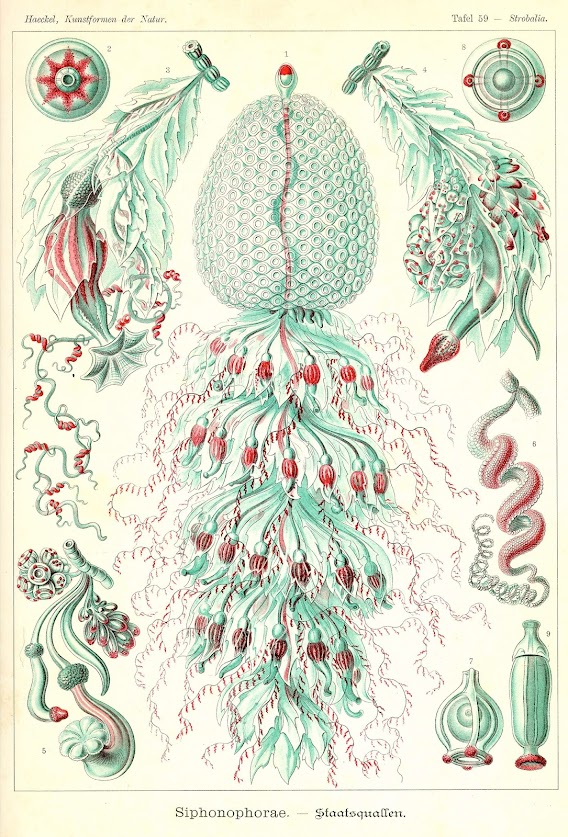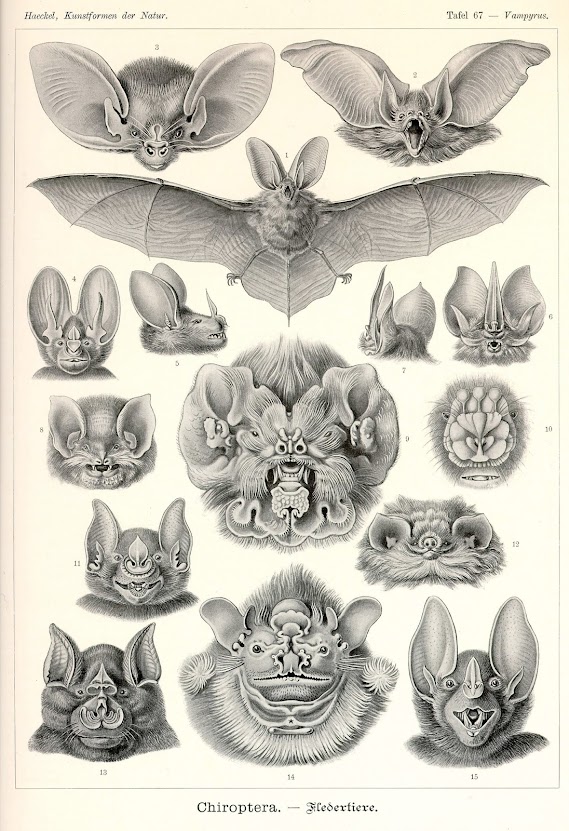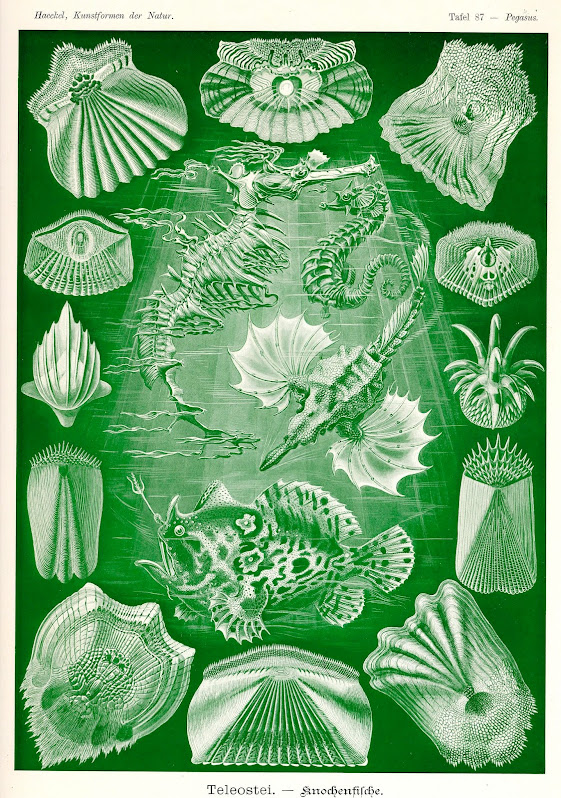Ernst Heinrich Haekel (1834-1919), a German physician, biologist and nature philosopher. Guided by his father into the practice of medicine, he soon forsook this early career to follow a path more to his liking. In 1862 he began his academic career as a biologist and professor of zoology at the University in Jena where he taught and conducted research until 1909.During his tenure at Jena, he devoted time to traveling as a field naturalist, collecting specimens along the way. He is noted for his discovery of radiolarian, a type of amoeboid protozoa that produces intricate mineral skeletons found as plankton throughout the ocean. These oceanic organisms are reflected in diverse forms that are strikingly beautiful, almost like the snowflakes of the sea. Notably, he also coined the terms “phylum” and “ecology.”
Haekel's academic and literary output was enormous, and by the time he was 60, he had produced 42 works of over 13,000 pages, including numerous scientific memoirs.
He was a flamboyant & controversial character who espoused Lamarckian rather than Darwinian concepts, though he did contribute to the popularisation of Darwin’s work in Germany. Something of a maverick in the scientific world, many of his drawings are closer to art than reality, as he was not above inventing creatures to substantiate his theories.
This is part 3 of a 3 part series on the works of Ernst Haeckel.
1899 Kunstformen der Natur part 2:
 |
| Plate 51 Polycyttaria |
 |
| Plate 52 Filicinae |
 |
| Plate 53 Prosobranchia |
 |
| Plate 54 Gamochonia |
 |
| Plate 55 Acephala |
 |
| Plate 56 Copepoda |
 |
| Plate 57 Cirripedia |
 |
| Plate 58 Tineida |
 |
| Plate 59 Siphonophorae |
 |
| Plate 60 Echinidea |
 |
| Plate 61 Phaeodaria |
 |
| Plate 62 Nepenthaceae |
 |
| Plate 63 Basimycetes |
 |
| Plate 64 Siphoneae |
 |
| Plate 65 Florideae |
 |
| Plate 66 Arachnida |
 |
| Plate 67 Chiroptera |
 |
| Plate 68 Batrachia |
 |
| Plate 69 Hexacoralla |
 |
| Plate 70 Ophiodea |
 |
| Plate 71 Stephoidea |
 |
| Plate 72 Muscinae |
 |
| Plate 73 Ascomycetes |
 |
| Plate 74 Orchidae |
 |
| Plate 75 Platodes |
 |
| Plate 76 Thoracostraca |
 |
| Plate 77 Siphonophorae |
 |
| Plate 78 Cubomedusae |
 |
| Plate 79 Lacertilia |
 |
| Plate 80 Blastoïdea |
 |
| Plate 81 Thalamophora |
 |
| Plate 82 Hepaticae |
 |
| Plate 83 Lichenes |
 |
| Plate 84 Diatomea |
 |
| Plate 85 Ascidiae |
 |
| Plate 86 Decapoda |
 |
| Plate 87 Teleostei |
 |
| Plate 88 Discomedusae |
 |
| Plate 89 Chelonia |
 |
| Plate 90 Cystoidea |
 |
| Plate 91 Spumellaria |
 |
| Plate 92 Filicinae |
 |
| Plate 93 Mycetozoa |
 |
| Plate 94 Coniferae |
 |
| Plate 95 Amphoridea |
 |
| Plate 96 Chaetopoda |
 |
| Plate 97 Spirobranchia |
 |
| Plate 98 Discomedusae |
 |
| Plate 99 Trochilidae |
 |
| Plate 100 Antilopina |





















































0 Comments